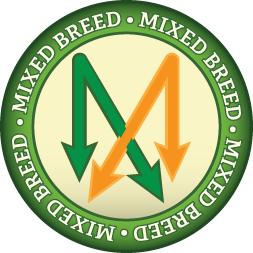
-
Activity Level:
moderate
-
Shedding Level:
moderate
-
Grooming Level:
low
-
Trainability:
high
-
Good for Novice Owners:
moderate
-
Adaptability:
high
-
Kid/Pet Friendly:
often
-
Prey Drive:
high
-
Watchdog:
very alert
- Average Size: Small
- Average Lifespan: 12-14 years
Schipperke Mix Dog Breed Information
Overview
Temperament
Adaptability
Health
Owner Experience
Grooming
Activity Level
Size
Life Span
A Schipperke Mix is a cross between a Schipperke and another dog breed. Because a Schipperke Mix can inherit any combination of traits from their parents, it’s important to talk to the breeder about the other parent breed.
If a mix takes after their Schipperke parent, they will be a small and affectionate dog with a lot of energy and a lot of personality.
Schipperkes are playful, energetic, and loving little dogs that can also have a bit of a mischievous streak. They love being around their favorite people and tend to get along well with children. They thrive on being the center of attention and have a high prey drive, which can be a challenge when it comes to other dogs and other pets.
They also tend to be wary of strangers, but a well-socialized Schipperke will tend to warm up once introduced. Schipperkes are also prone to alert barking and you will want to train your dog to stop barking early on to keep it from becoming a nuisance. If the other parent breed is similar, then you can expect a similar temperament from a Schipperke Mix.
You can also meet the mother in person. This will give you an idea of what her temperament is like and what behavior she has been modeling for her puppies. Although the breeder should have started some socialization and training, it is up to you to continue them once you bring a puppy home.
A Schipperke is a highly adaptable dog that does well in apartments and larger homes as long as they get enough exercise. Because of their high prey drive, they should only be let off-leash in secure areas. They thrive in moderate climates, but are sensitive to very hot or very cold weather. They do not like to be left alone for long periods of time.
If the other parent breed is also highly adaptable, then you can expect the same from a Schipperke Mix. You still want to talk to the breeder to make sure you are aware of any potential quirks the other parent breed could introduce.
Although mixed-breed dogs can sometimes be healthier than purebred dogs, it’s not a guarantee, and good breeding practices make a big difference. Reputable breeders screen their dogs to avoid passing preventable issues to puppies. So, make sure you are asking about the health of the parents and about any tests or clearances that have been done.
From the Schipperke side, potential health concerns to be aware of in a Schipperke Mix include luxating patella, Legg-Calve-Perthes disease, eye problems, and thyroid issues. MPS IIIB is a fatal genetic disease that all Schipperkes should be tested for; make sure this has been done for the Schipperke parent.
A Schipperke is highly intelligent, picks up on things quickly, and is known to be able to learn almost anything – as long as they want to. They are relatively independent dogs that can have a stubborn streak. Because of this, it’s recommended that novice owners enroll in puppy training classes.
If the other parent breed is similar, then you can expect a moderately trainable Schipperke Mix. If the other parent breed is easier to train, you will still want to be prepared to enroll in puppy training classes. In addition to training, there are several benefits of puppy training classes, so they tend to be a good idea regardless.
A Schipperke Mix can inherit a coat similar to one of their parents or a coat that is a mix of both of them. If they inherit the Schipperke coat, they will shed moderately year-round with heavier seasonal shedding. Weekly brushing and a bath as needed are the minimum; daily brushing is recommended during seasonal shedding.
In addition to coat care, you will also need to take care of your Schipperke Mix’s nails, ears, and teeth. Once or twice monthly nail trimming is enough to keep them from growing too long. Weekly ear checks with careful cleanings as needed can help prevent ear infections. Good dental care for dogs like daily tooth brushing or daily use of an enzyme toothpaste can help prevent dental diseases later in life.
Although they sit in a moderate range, Schipperkes are energetic dogs that will have bursts of high energy when they play. Daily walks plus playtime and other activities are usually enough for them, but they’ll probably be up for more if you are.
If the other parent breed is similar, then you can expect the same from a Schipperke Mix. If the other parent breed sits in a lower or higher activity range, then you will want to be prepared for a mix to be somewhere in that potential range.
Fully-grown Schipperkes usually stand 10-13 inches tall at the shoulder and weigh 10-16 pounds. The other breed can affect this, especially if they are the mother, so you do want to ask the breeder about them. It’s not a guarantee, but you can meet the mother to get an idea of what size to expect in a fully-grown Schipperke Mix.
A Schipperke generally lives for 12-14 years on average. Although the other parent breed may affect this slightly, you should be able to expect a similar average life span from a Schipperke Mix.






